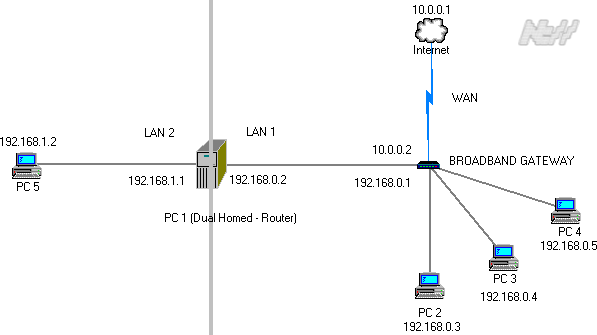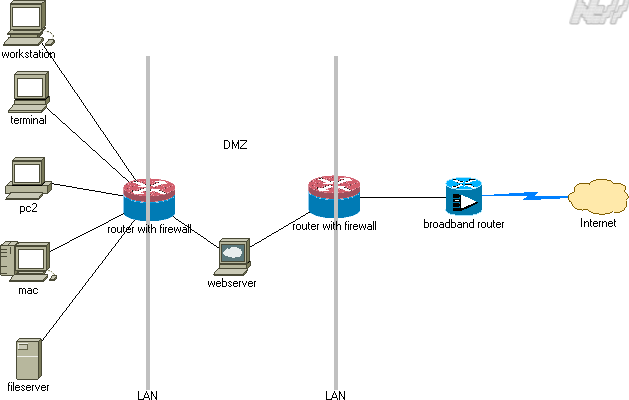Routing
In addition to Network Address Translation (which is the technology used by the Internet Connection Sharing feature), Windows NT based operating systems also contain a 'quick routing' IP Forwarding feature which can forward network packets between all network sub nets present on a particular multi homed machine
Unlike Bridging, which operates at a lower layer [of the networking stack], Routing and Forwarding work in the network layer determining which packets need to go where.
Windows Server and Linux/Unix contain a full router implementation.
IP Forwarding is enabled in Windows 2000,XP, 2003 by toggling a registry key and rebooting the machine.
HKEY_LOCAL_MACHINE\SYSTEM\CurrentControlSet\Services\Tcpip\Parameters
Value Name: IPEnableRouter
Value type: REG_DWORD
Value Data: 1
In these setups we have three sub nets indicated by WAN, LAN 1 and LAN 2, therefore we need to ensure packets are routed correctly between these subnet's.

Setting this by itself will only allow for static routing between networks. To further add Internet Connectivity to the routed network, static routing rules should be configured in the broadband gateway/router, available through the static routing option in the gateway/router's setup
Routing also allows a true Internet/network DMZ to be set up. A true DMZ differs from the function offered in many broadband routers in that in these devices, the DMZ function is simply an allow-all firewall rule for the selected IP address, whereas a true DMZ is a separate subnet between two firewalls.

See the following document entitled 'TCP/IP Routing Basics in Windows NT' for more information regarding Windows NT routing
http://support.microsoft.com/kb/140859/EN-US/
Bridging and routing/forwarding are two methods to expand a network, however we recommend users utilise the Bridging function to expand their network in constrained environments
Specific broadband services such as IPTV can work through a bridged network but will not pass through a routed configuration.
Dual integrated Ethernet ports are a cost effective, value for money and useful feature to look out for when choosing a new computer or main board especially if the new system will be used with an existing LAN.
However, the same procedures and scenarios described here are also applicable to add in Network cards, the only difference being cost of acquisition and installation of cards.